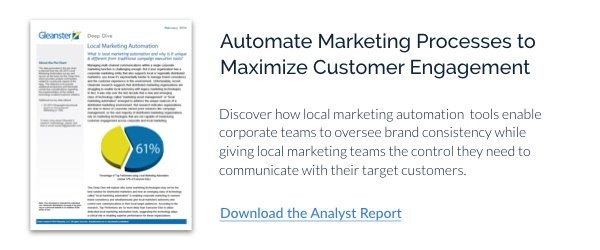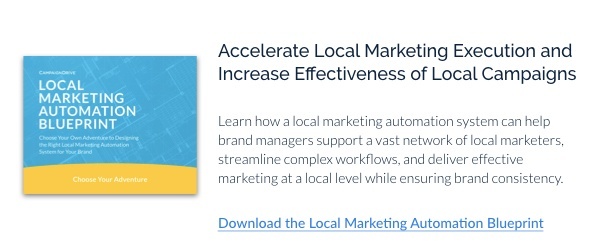
Gary Katz is the Chief Marketing Officer with Marketing Operations Partners and Marketing Future Forum and the leading innovator in the field of Marketing Operations: first consulting firm, first benchmarking study, first university course, first international seminar. We recently sat down with Gary to learn how the enterprise can increase marketing agility using everything from marketing philosophy to agile methodology to software best practices.
What are the most important components of enterprise marketing agility today?
First, I think it's important to define what marketing agility means. A lot of people confuse Agile Marketing with marketing agility. The former is a methodology; the latter is an attribute.
We see marketing agility as a way to mobilize the enterprise. It allows everyone to rapidly adapt to emerging market opportunities. It drives strategic value for your customers and the company.
If marketing agility is working in your company, you are truly customer centric. Your business intelligence is widely-accessible and actionable. Your decision-making process is transparent. The companies that are the best models of marketing agility leverage systems thinking and see themselves as a learning organization.
They consistently start with a solid marketing strategy (or as Covey puts it, begin with the end in mind) that has buy-in from everyone that plays a part in the specific marketing initiatives (from the most senior executive to the local marketer). Just as important, they invest in insight by gathering data from across the whole enterprise. This helps them reinforce the strategic decisions they've agreed on, or make a crucial change that can mean the difference between a sub-par campaign and a great one.
Once that's in place, the next key for enterprises to increase their marketing agility is to focus on the customer. Voice of the customer initiatives – especially those that include employees on the frontline like franchisees or dealers – is the tonic to get past opinions, agendas and politics and shine the light on real customer needs.
The most surefire way to increase enterprise marketing agility is to capture this customer insight and make it accessible quickly to marketers all around the company. When you do this, it creates a "single source of truth" that produces incredibly powerful institutional memory so marketers (of all skill levels) instinctively know how to approach their customers.
What's the best Agile Marketing philosophy for enterprises to follow?
Marketing's role is to be the voice of the customer, growth driver and change catalyst for the enterprise. It is most effective when it stimulates mutual engagement with stakeholders, especially customers, and ultimately achieves an exchange of value.
The key principles of Agile Marketing that enterprises need to follow are:
Know yourself: The key to differentiation is to thoroughly understand what makes your product, service or company stand out from the crowd. What problem are you solving? What do you stand for and why? Who you want to do business with? How will you make a difference?
Know your market: Thoroughly understand the business opportunity, trends, patterns that may lead to future trends, competitive positioning, ecosystem.
Think like your customer: Target customers that fit your business model and develop deep insights about them: What outcome(s) are they trying to achieve and why? What's the gap between their current and desired future state? What's blocking them from getting there? What are their motives, urgency, payback expectations, consequences of inaction, means to act and perceived risks in acting? Segment your audience and develop personas to ensure you develop messaging that is context specific and relevant to each.
Market to customers on their terms, not yours: Understand your customers' buying journeys. Deliver useful content, just in time, to support them wherever they are in their journey. Think relationship, not transactions. They will buy when they are ready; pushing them to do so earlier is putting your needs over theirs. Respect their privacy and be especially cognizant of inadvertently spamming them via communications that are self-centered, invasive and, especially, irrelevant. Create opportunities to listen at least twice as much as you communicate.
Prepare for contingencies: Executing a marketing strategy is an ongoing process. Smart companies have a contingency plan in place that enables them to make course corrections, in alignment with the strategy, to address the dynamic realities of doing business – new market forces, competitive innovations, changes in customer preference or requirements. Today's marketers must have a mindset of continuous experimentation, adaptation and refinement to be effective.
What's the biggest misconception brands have about marketing agility?
Too many brands see marketing as little more than running a marcom shop. This is disempowering as marketing organizations that are valued only for their ability to pitch, publish and put on events rarely have a seat at the strategy table.
Another misconception is that marketing should stick to its purview and not rock the boat. I heard of one case where a big company marketer had identified a fundamental gap and pointed it out to her boss. His response was that, even though she had correctly identified something rotten at the core, it was a political landmine and the prudent response was to ignore it and go around it. She becomes valued for her resourceful ability to skirt the issue - treat the symptom - but at what cost? It's imperative that marketing refrain from becoming a co-conspirator in allowing a company to continue to operate sub-optimally, when the consequences are obvious to anyone who has the courage to just open his eyes.
True marketing agility in enterprises depends on the marketing organization being a true strategic player in the business. Marketers should be seen as innovators and growth drivers, not just at the C-level but throughout the whole company.
What is the most overlooked resource that can lead to better marketing agility?
Sadly, I'd say it's the people. We invest in strategy. We invest in programs. We invest in technology. But beyond compensation, we neglect the development of our people. I've seen stats from a well-known research firm that claimed some marketing organizations invest less than $1,000 a year on marketing professional development (for the entire organization!).[1]
That's shocking when you consider that dozens of students in my classes at UCSC Extension invest more out of their own pockets in a semester. I continue to be bewildered how difficult it is for marketing operations pros, the very people that are vested with building the capability of the organization, to justify spending on training or improvement programs – especially the "soft" skills that develop the leaders, facilitators and change agents of the future.
Looking at the question from a different angle, people also tend to overlook one another. CMOs minimize the strategic value people down the organizational chart can bring to the equation. Marketing functional and operations leaders start to believe they have all the answers and stop seeking input from or listening to their peers, both in and outside marketing. Many marketers don't understand the roles, contributions and capabilities of fellow marketers or cross-functional colleagues, so they miss opportunities to leverage expertise and brilliance that is sitting in a few cubicles away. This is the problem with organizational silos and marketers either perpetuate them or need to assert leadership to address them.
Large companies especially need to unlock the potential of their people and leverage it in their marketing efforts. I wrote an article for MarketingProfs back in 2005 [2] that spotlighted "leaky institutional memory" as one of marketing's seven deadly sins. A couple of years later, we conducted the disciplines' first benchmarking study, Journey to Marketing Operations Maturity [2], where we saw knowledge management as one of the largest perceived gaps. Brands have to see this as a strategic priority, and they need to devote resources to uncover and preserve this knowledge throughout the organization.
How can brands use software to increase their marketing agility?
Technology can be a great enabler, or a spotlight that shines a bright light on all the warts in the marketing organization. Marketing software is not a panacea to the chaos that is common in marketing organizations. Adding automation to a dysfunctional situation is nothing more than automated dysfunction.
Disparate systems are a headache for many CMOs, especially in large organizations where point systems were purchased to tend to the needs of a functional group (like independent franchisees who purchase their own marketing software). These one-off solutions end up siloed from other key technologies. It's tough to be a CMO, trying to make sense of data by analyzing dashboards in multiple systems to arrive at an actionable insight.
The other huge challenge for marketing organizations these days is figuring out what technologies ought to be a part of their MarTech stack. It's easy to get blinded by shiny objects and buy into a solution for a problem your organization is not ready to solve. For example, many organizations have invested in marketing automation systems with capabilities well beyond what they are able to use. It's the old analogy of buying a Mercedes (or these days, a Tesla) and keeping it in the garage.
I think the larger brands have become quite sophisticated in this area, especially CPG companies (e.g. Proctor & Gamble), conglomerates (e.g. GE) and financial services firms (e.g. Bank of America). These companies adopted marketing automation very early and it became a fundamental part of their business processes.
From these giant companies, we can learn from their mistakes. They often discovered their processes, data strategy, capabilities or metrics weren't well enough defined to get the most out of the technology. The consequence was high total cost of ownership, disappointing ROI and poor user adoption. Because of their trail-blazing, companies today that heeded these lessons can navigate the technology road with much less risk.
See how Local Marketing Automation can Help Distributed Brands be More Agile. Download the Full Report.
Sources:
- http://www.skilledup.com/insights/how-top-companies-make-the-roi-case-for-employee-training
- http://www.marketingprofs.com/5/katz1.asp
- http://mopartners.com/downloads/journey-to-marketing-operations-maturity/



